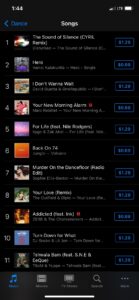So you want to learn electronic dance music terms right? It’s quite simple actually. All you have to do is take a little bit of time out and get educated. In this article I’m going to teach you the top five electronic dance music terms. By the time you’re done reading this article, you’ll know everything there is to know about this amazing electronic music genre.
The first of our five electronic dance music terms is the drum kit. Now for beginners, this may not sound all that important, but trust me when I tell you it is. Without the proper drum set up, you won’t have any rhythm. This is why learning how to properly handle a digital beat sequencer is so important. You need to be able to hear it as well as playing it with a good set of headphones.
The next electronic music term we’re going to talk about is the beat. This is what makes electronic music become danceable. A beat is the pulse of a track. You can use this to your advantage or to make sure your track sounds great to other people. Sometimes an electronic music label will pay artists to make beats for their tracks so you better learn to grab the opportunity if it comes your way.
Next on our list is the musical arrangement. This term describes the technical side of how an electronic piece is put together. While most of us think of it as a term for electronic music, it can also apply to dance music. This is because the arrangement of a track often determines how it sounds and feels. Without the right arrangement, an electronic piece could easily become flat and boring. An electronic music term is arranging something well.
The next electronic dance music term we’re going to talk about is the bass line. This term generally refers to the low end of an electronic piece. Often times the bass lines are what drive a song. Bass lines are what make a song rock or feel heavy. This term is not often used in electronic dance music, but it should be.
Next is the drum fill. This term refers to the broken lines in electronic music. These lines are often times used to indicate where on a track one is supposed to stop, such as a break in a dance flow. This is very important in electronic dance music, because sometimes a song may skip over a section of a beat because the beat is broken. This makes for a very frustrating experience for many people because it can happen anytime.
Finally, the next term we’re going to talk about is bass distortion. This term is often used in conjunction with the bass line. It describes any unnatural occurrence in electronic music, such as a scratchy sound, an overly aggressive drum beat, etc. These are things that you don’t want to hear in dance because they will take away from the overall rhythm and feel of a song. However, certain producers and DJs are willing to tolerate these things so long as it fits with their style of electronic music.
Hopefully this short article has given you a quick starting point for learning more about electronic dance music terms. These terms are very important to the production of electronic music, but they’re not the only thing that affects the music. Make sure to listen to a lot of great music and pay attention to the words being used in it. By doing this, you’ll quickly start to get a better grasp on the many different terms that are used in modern dance music.


